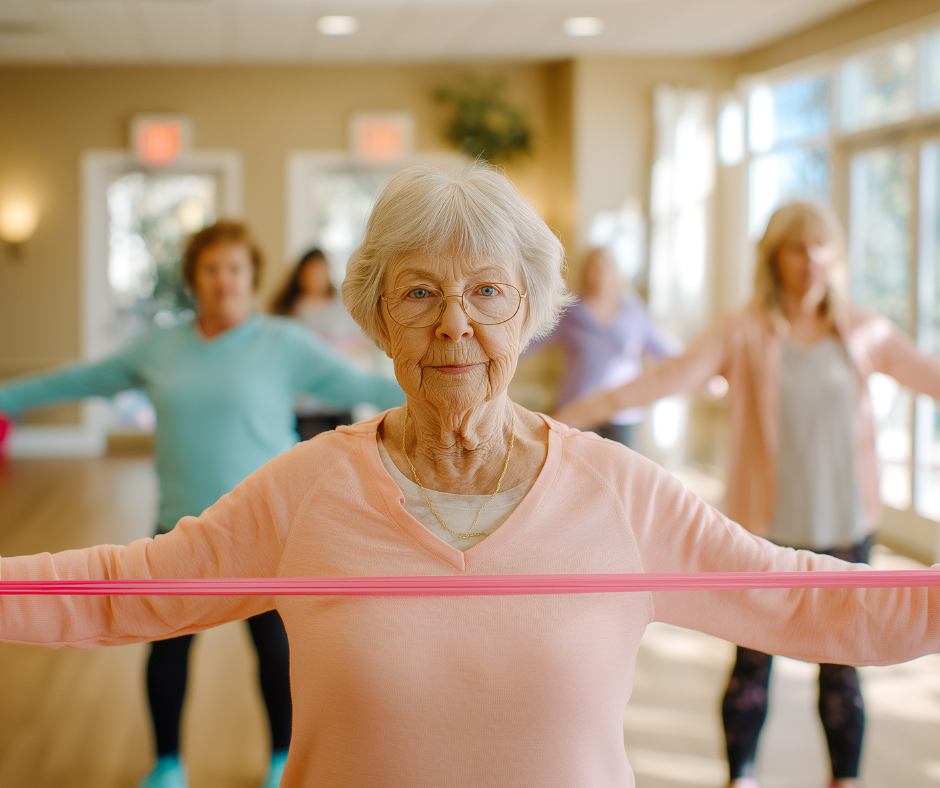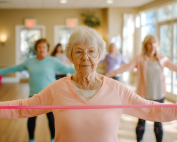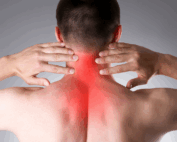The Golden Years, The Active Years: Why Movement and Connection Matter for Seniors
As we age, the passage of time brings with it a wealth of experience and wisdom. Yet, with these precious gifts, there can also be a natural inclination towards a more sedentary lifestyle. However, emerging research is painting a clear and compelling picture: staying physically active and socially engaged later in life isn’t just a pleasant pastime; it’s a vital ingredient for a thriving and fulfilling existence, particularly for individuals in their 80s and 90s.
The notion that life slows down to a crawl post-retirement is a narrative we need to actively challenge. Instead, let’s embrace a perspective that highlights the profound benefits of continued participation in both physical fitness and social activities for our senior population. Studies consistently demonstrate that these two pillars of well-being are intrinsically linked and contribute significantly to improved quality of life, cognitive function, and overall longevity.
The Transformative Power of Physical Fitness for Seniors
For individuals in their 80s and 90s, the benefits of physical activity extend far beyond mere calorie burning. It’s about maintaining independence, enhancing physical capabilities, and mitigating the risk of age-related health issues. Regular movement, tailored to individual abilities, can lead to remarkable improvements:
Enhanced Mobility and Balance: Falls are a significant concern for seniors, often leading to serious injuries and a loss of independence. Activities like walking, gentle yoga, tai chi, and specialized senior fitness classes can significantly improve balance and coordination, reducing the risk of falls.
Strengthened Muscles and Bones: Muscle mass and bone density naturally decline with age. Strength training, even with light weights or resistance bands, can help combat this decline, making everyday tasks easier and reducing the risk of osteoporosis and fractures.
Improved Cardiovascular Health: Regular aerobic exercise, such as brisk walking, swimming, or cycling, strengthens the heart and lungs, improving circulation and reducing the risk of heart disease, stroke, and high blood pressure.
Better Chronic Condition Management: Physical activity can play a crucial role in managing chronic conditions like diabetes, arthritis, and depression. It can help regulate blood sugar levels, reduce joint pain and stiffness, and boost mood.
Increased Energy Levels: While it might seem counterintuitive, expending energy through exercise actually leads to increased overall energy levels, combating fatigue and lethpritargy.
The Indispensable Role of Social Activities
Loneliness and social isolation are significant health risks for seniors, often exacerbating existing health problems and negatively impacting mental well-being. Conversely, strong social connections are a potent antidote, fostering a sense of belonging and purpose. Engaging in social activities provides seniors with:
- Emotional Support and Reduced Loneliness: Connecting with others provides a vital outlet for sharing experiences, feelings, and concerns, offering emotional support and combating feelings of isolation.
- Cognitive Stimulation: Engaging in conversations, playing games, or participating in group discussions keeps the brain active and stimulated, potentially delaying cognitive decline and improving memory.
- A Sense of Purpose and Belonging: Participating in community groups, volunteer work, or family gatherings provides seniors with a sense of purpose and reinforces their connection to the world around them.
- Motivation for Physical Activity: Many social activities inherently involve movement, such as walking groups, dance classes, or group outings. This dual benefit makes them incredibly valuable.
- Stress Reduction: Social interaction can be a powerful stress reliever, offering opportunities for laughter, enjoyment, and a distraction from worries.
- Bridging the Gap: Combining Movement and Connection
The most impactful approach for seniors in their 80s and 90s is often found at the intersection of physical fitness and social engagement. These integrated activities offer a holistic approach to well-being:
Here are some examples of activities that blend physical and social benefits:
- Walking Groups: Regular group walks offer companionship, shared experiences, and a gentle cardiovascular workout.
- Dance Classes (e.g., Ballroom, Line Dancing): These are excellent for coordination, balance, and cardiovascular health, all while fostering a fun and lively social environment.
- Tai Chi or Qigong Classes: These mind-body practices improve balance, flexibility, and stress reduction, often conducted in a calm and supportive group setting.
- Water Aerobics: The buoyancy of water reduces stress on joints, making it ideal for seniors, and group classes provide a social dynamic.
- Community Gardening Groups: This activity combines light physical labor, fresh air, and the satisfaction of nurturing plants, all within a social community.
- Active Senior Centers: These centers often offer a variety of fitness classes, recreational games (like bridge or bingo), and social events, providing a hub for connection.
- Volunteer Opportunities: Many volunteer roles involve light physical activity and offer immense social rewards and a sense of contribution.
Investing in Later Life
As a society, we have a responsibility to ensure that our aging population has access to opportunities that promote active and engaged living. For individuals in their 80s and 90s, this means recognizing that the desire and need for movement and connection do not diminish with age. By encouraging and supporting participation in physical fitness and social activities, we are not just improving their present lives; we are investing in their future health, happiness, and continued contribution to our communities. Let’s champion the golden years as truly active and vibrant years for all.
Read More: Aging in Place
Learn More: Nutrition & Fitness by HHS







